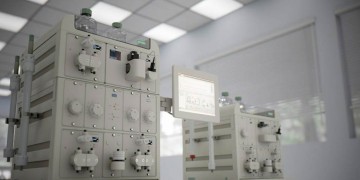
Trends in Antibody Generation Techniques — the Fully Synthetic Human Combinatorial Antibody Library (HuCAL®) Technology
From using nonspecific polyclonal antibodies to developing monoclonal antibodies from immortalized antibody-producing cells to antibody engineering and generation of antibodies using an animal-free library with billions of antibody fragments to choose from, the antibody technology has seen tremendous advances. Explore where this journey started and what the current trends are and what the human combinatorial antibody library (HuCAL) technology destination has to offer!

Ultra-Sensitive Quantification of Genome Editing Events Using Droplet Digital PCR
Genome editing using tools such as CRISPR/Cas9 and TALEN has gained enormous popularity in recent days due to their ability to create precise deletions or insertions. However when the frequency of these gene edits are really small, an ultrasensitive method like ddPCR™ is needed for accurate quantification. This technote explains how Droplet Digital™ PCR is used for the detection of HDR and NHEJ alleles generated using CRISPR/Cas9 and TALEN editing systems.

CRISPR: The Hopes, the Fears, and the Biology
Few discoveries have changed the pace of discovery and the types of questions we can ask as drastically and quickly as CRISPR-based genome editing. But where did CRISPR come from? How was it adapted to become such a game-changing genome editing tool? And why are some of its greatest proponents alarmed?

Aliens in Our Midst
As we seek out organic compounds and water on the surface of Mars, ponder the potential for hidden oceans on Europa, and discover new Earth-like exoplanets, the promise of astrobiology — namely, alien life in some form — seems closer than ever to reality. Yet what if aliens are already here on Earth, not as otherworldly visitors but alternative organisms, separately evolved and existing in a shadow biosphere?

Get Published! 10 Tips for Getting Published Successfully
When you have finished all your experiments and have the paper ready in your head, you need to consider several factors before sending it for publication. Here are some tips that Bio-Rad’s PrimePCR™ PCR Primers and Assays group put together for getting the paper published successfully.

Next Generation Computers: Transforming Cells into Autonomous Computing Devices
What do computers and cells have in common? Can cells function as computers or recording devices? Can a bacterial computer be built? Synthetic biologists have recently developed a platform called SCRIBE (Synthetic Cellular Recorders Integrating Biological Events) to convert genomic DNA into a “tape” for recording and memorizing information. This article explores many interesting aspects of autonomous cellular memory and the potential applications of such living computational systems.

Advantages of Multidimensional (Multi-D) Chromatography Using the NGC™ Chromatography System over Traditional Sequential Chromatography
Traditional sequential chromatography typically requires intensive hands-on user manipulation, which could hinder the reproducibility of protein purification runs. Multi-D chromatography aims to improve this process while maintaining the efficacy of the traditional workflow.

Too Many Questions, Too Little Sample: Developing a Real-Time PCR Workflow for Monitoring Gene Expression in Limited Samples
Traditional real-time PCR workflows often limit the number of genes that can be studied, especially when sample amounts are small. A new workflow now allows Mark Kibschull of the Lunenfeld-Tanenbaum Research Institute in Toronto to track the expression of hundreds of genes using a fraction of the starting material required by traditional methods.

7 Tips for Choosing the Right Antibody for Western Blotting
Which antibody is the best to obtain a definitive and conclusive answer for my questions? How do I choose the best antibody for my purpose? These are standard questions that scientists ask time and time again. Here are a few tips to choose the most appropriate antibody for your specific application.

Adding Another Dimension to Cancer Research: Three-dimensional Printing of Cancer Cells
Traditionally, researchers have relied on two-dimensional single-layer cell culture to analyze the physiological characteristics of tumor cells and their response to anti-cancer therapies. However, an international team of scientists recently used a three-dimensional (3D) printer to construct a three-dimensional (3D) model of a cancerous tumor, which may provide a more realistic representation of the tumor’s microenvironment and thus improve knowledge on how tumors develop, grow, and spread.
